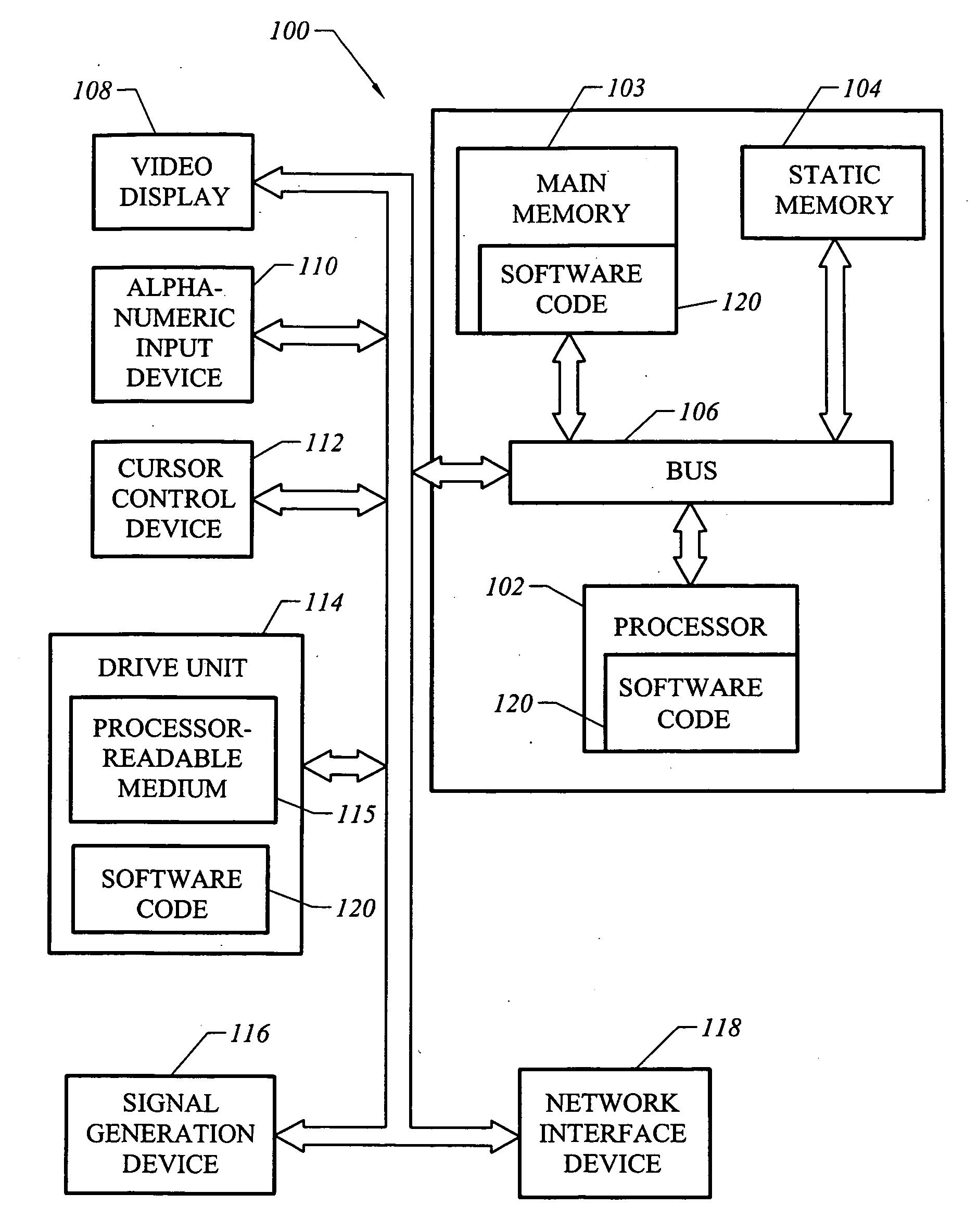Apparatus and methods for assessing metabolic substrate utilization
a metabolic substrate and utilization rate technology, applied in the field of metabolic substrate utilization, can solve the problems of metabolic substrate utilization defect, inability to provide information regarding the underlying causes of carbohydrate differences, and inability to accurately assess metabolic substrate utilization
- Summary
- Abstract
- Description
- Claims
- Application Information
AI Technical Summary
Problems solved by technology
Method used
Image
Examples
example 1
[0057] Tissue-specific versions of Equations 1 and 2 were developed for use with the metabolism PhysioLab® platform, which includes Entelos® Metabolism PhysioLab® systems (available from Entelos, Inc., Foster City, Calif.). These tissue-specific versions accounted for inter-tissue differences in metabolic substrate concentration and genetic predisposition. In some instances, these tissue-specific versions also accounted for metabolic substrates such as amino acids, lactates, and ketones. Values of tissue-specific versions of the metabolic parameters sg, sf, and w were calculated to predict carbohydrate oxidation rates and fat oxidation rates for different tissues under various meal and exercise protocols. Metabolic substrate oxidation rates for different tissues were then aggregated to predict metabolic substrate oxidation rates for an individual (e.g., “whole-body” metabolic substrate oxidation rates). Some results are shown in Table 1 given below.
TABLE 1Measured fatSimulation fa...
example 2
[0060] Equations 1, 2, and 3 were used to calculate values of the metabolic parameters sg, sf, and w based on a single meal test. The goal was to identify a relatively simple clinical test that allows values of the metabolic parameters sg, sf, and w to be calculated. Along this regard, an OGTT was simulated for a baseline virtual patient representing a 70 kg healthy individual. FIG. 4 illustrates simulated results for the normalized plasma free fatty acid concentration (labeled as “Normalized FFA”), the normalized plasma glucose concentration (labeled as “Normalized glucose”), and the respiratory quotient (labeled as “Measured RQ”) of the baseline virtual patient subjected to the OGTT. As illustrated in FIG. 4, both the normalized plasma free fatty acid concentration and the normalized plasma glucose concentration change considerably in response to the OGTT. Changes in the normalized plasma free fatty acid concentration and the normalized plasma glucose concentration allowed values ...
example 3
[0065] Equations 1, 2, and 3 were used to calculate values of the metabolic parameters sg, sf, and w based on published studies. The published studies included measurements of the plasma free fatty acid concentration, the plasma glucose concentration, and the respiratory quotient at several measurement times after a meal. One published study included measurements for individuals under three different meal protocols, namely glucose only, a high fat meal, and a mixed meal (Bobbioni-Harsch E, Habicht F, Lehmann T, James R W, Rohner-Jeanrenaud, and Golay A, “Energy expenditure and substrate oxidative patterns, after glucose, fat or mixed load in normal weight subjects,” Eur. J. Clin. Nutr. 1997 June;51(6):370-4). Another published study included measurements for individuals following OGTT (Bulow J, Simonsen L, Wiggins D, Humphreys S M, Frayn K N, Powell D, and Gibbons G F, “Co-ordination of hepatic and adipose tissue lipid metabolism after oral glucose,” J. Lipid Res. 1999 November;40(1...
PUM
 Login to View More
Login to View More Abstract
Description
Claims
Application Information
 Login to View More
Login to View More - R&D
- Intellectual Property
- Life Sciences
- Materials
- Tech Scout
- Unparalleled Data Quality
- Higher Quality Content
- 60% Fewer Hallucinations
Browse by: Latest US Patents, China's latest patents, Technical Efficacy Thesaurus, Application Domain, Technology Topic, Popular Technical Reports.
© 2025 PatSnap. All rights reserved.Legal|Privacy policy|Modern Slavery Act Transparency Statement|Sitemap|About US| Contact US: help@patsnap.com



